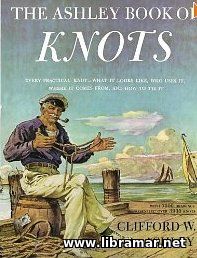Handling and Inspection of the Drill Collars

Drill collars are heavy and award to move around the rig. The crew must be very careful to prevent damage to the threaded ends and shoulders. Putting the heavy collars down on unprotected threads or knocking the threads with another collar can easily damage them. Crew members should keep thread protectors on both ends of the collar when they move the collars around the rack and across the catwalk. Some thread protectors have bails, or handles, which make it easier for crew members to pick up the collar. Regardless of how collars are moved, the thread protectors should be in place first.
When crew members are ready to move the collars through the V-door, they use a lifting sub or nipple screwed onto the collars if the collars do not have recesses. Unless manufactured with recesses, collars require either subs or nipples to provide a place for the elevators to attach. Before using subs or nipples, however, crew members should check the threads and the shoulder on the subs or nipples to be sure they are clean and that they fit the collar.
Before a drill collar can be made up to another one, crew members should make sure that the threads are clean and dry and that they are not rusted. Keeping the threads clean increases the life of the connections by eliminating any abrasive materials that can damage the threads. Crew members should also inspect the collar to make sure that it is not damaged. A damaged drill collar should never be run into the hole. The drilling crew should regularly inspect the collars to make sure they are in good condition. Even slight damage can cause problems downhole.
never be run into the hole. The drilling crew should regularly inspect the collars to make sure they are in good condition. Even slight damage can cause problems downhole.
After crew members have made sure that a collar is clean and in good condition, they can make it up to the bit or to another collar. They should apply a good coating of thread compound, or dope, to the threads and shoulders. This lubricant, normally a soft metallic component like copper or zinc in a grease base, lubricates and separates mating threads and shoulders in spite of the high stresses put on them during makeup and while drilling. It also makes it easier to screw the two joints of collar together. Crew members should never dilute or thin the thread component because this will reduce the percentage of metallic component and thus increase the chances of galling the threads. Because many cleaning fluids used on the collars can dilute the lubricant, crew members should make sure that the collar threads are completely dry before applying the compound.
The crew should take great care not to damage the threads or shoulder when stabbing the pin into the box. Dropping the pin onto the box shoulder or jarring the threads during makeup can cause severe damage.
After stabbing the pin of one collar into the box of another, crew members hand-tighten the two collars together by ”walking in” the one on top while the rotary keeps the lower one stationary. Hand-tightening the collars before making them up to final torque helps preserve the threads. The crew should hand-tighten the collars using the chain torques rather than the spinning chain because the spinning chain would spin too fast and possibly gall the threads. Also, the collars are so big and heavy that it is easier for the crew to hand-tighten them by holding the top collar with tongs and walking around the rotary turning the top collar until it is screwed into the bottom collar. On some rigs the crew uses a spinning wrench to make up the collars hand-tight. The crew can use the spinning wrench only on collars that are not over 9 1/8 inches in diameter. If the outside diameter of the collar is larger than that, the wrench will not fit around it.
To make up the drill collars to the final recommended torque, the crew uses the breakout tongues and the cathead. The drill collars are so heavy that they require a great deal of pulling force to be made up to proper tongue. The breakout cathead uses a very strong cable attached to the end of the breakout tongs. Cable is stronger than chain and is therefore less likely to break. In addition, the breakout cathead and cable are located well away from the driller. Thus, if there is a break in the cable, the driller will not be in danger. If crew members used the makeup cathead and tongs, they would be using a chain instead of a cable and would be much closer to the driller – too close for safety. Drill collar connections should never be made up or broken out by turning the rotary because the rotary spins the collars with too much force and the collars can be damaged. After crew members have broken a connection using the tongs, they may then use the rotary to finish spinning it out.
After crew members make a connection, they are ready to lower the collar into the hole and attach another one. They attach the elevators to a lifting sub that is made up to the top of the collar that is above the rotary table and lower the collar through the rotary. If the outside of the collar is smooth, crew members attach a safety clamp to the collar before releasing the elevators. The clamps hold the collar in the rotary should the slips fail. If the collar has slip recesses, the clamp is not needed. The slips are used to hold the collar in the rotary. Once the collar is secure, crew members are ready to repeat the process until all the collars are connected.
 Special contractors and inspection crews inspect drill collars for damage on a regular schedule. Carefully performed field inspections can help minimize downhole failures. The frequency of inspection depends on the type of drilling being done. Experience is the best teacher for how frequently the inspection crew should inspect the drill collars. Once a month is a fairly typical inspection schedule, but the schedule can be adjusted depending on the number of cracks found or the number of failures occurring. If the inspection crew finds from one to three cracks each inspection, then once a month is frequent enough. If more than three are found, they should inspect more frequently. Crew members can also make unscheduled inspections when the drill collars have been used long enough to form fatigue cracks or any other damage that may be worsened downhole during drilling and cause the collar to fail.
Special contractors and inspection crews inspect drill collars for damage on a regular schedule. Carefully performed field inspections can help minimize downhole failures. The frequency of inspection depends on the type of drilling being done. Experience is the best teacher for how frequently the inspection crew should inspect the drill collars. Once a month is a fairly typical inspection schedule, but the schedule can be adjusted depending on the number of cracks found or the number of failures occurring. If the inspection crew finds from one to three cracks each inspection, then once a month is frequent enough. If more than three are found, they should inspect more frequently. Crew members can also make unscheduled inspections when the drill collars have been used long enough to form fatigue cracks or any other damage that may be worsened downhole during drilling and cause the collar to fail.
Visual Inspections
API RP 7G, section 10, gives recommendations for drill collar inspection, the drill collars should be inspected to determine overall condition and obvious damage. Inspection crew members should then measure the outside and inside diameters of both ends to determine whether the outside of the collar is worn. Remember, the drilling crew must know the exact OD, ID, and the style of connection before looking up the recommended makeup torque and to determine if the shoulders are adequate to form a good seal between the drill collars and to make sure that the bending strength ratio between the box and the pin has not fallen below 2.50.
The inspection crew should use a profile gauge to make sure the threads on the pin have not been stretched or worn. Stretched or worn threads may not hold the shoulders together well enough to form a good seal during drilling.
Inspection crew members should also make sure that the box diameter is not swollen and that the box and pin shoulders are flat and free from any damage. The inspection crew can repair slight damage to shoulders by refacing and beveling shoulders. If extensive damage is found, however, the drill collar must be repaired in a machine shop.
extensive damage is found, however, the drill collar must be repaired in a machine shop.
Magnetic Inspections
In addition to visually inspecting the pin and box for any signs of damage, the inspection crew should inspect the drill collars magnetically. Magnetic inspection can find cracks not easily seen. The inspection crew magnetizes the collar with an electric coil. Next, crew members spray the ends of the magnetized collars with a fluid containing fine iron filings coated with a fluorescent dye. The filings are attracted to any notch or crack. The inspection crew then uses an ultraviolet light under a hood to see if any cracks or notches are present.
The "Read Later" function allows you to add material to this block with just one click. Just click on the icon and read the articles that interest you at any convenient time.


